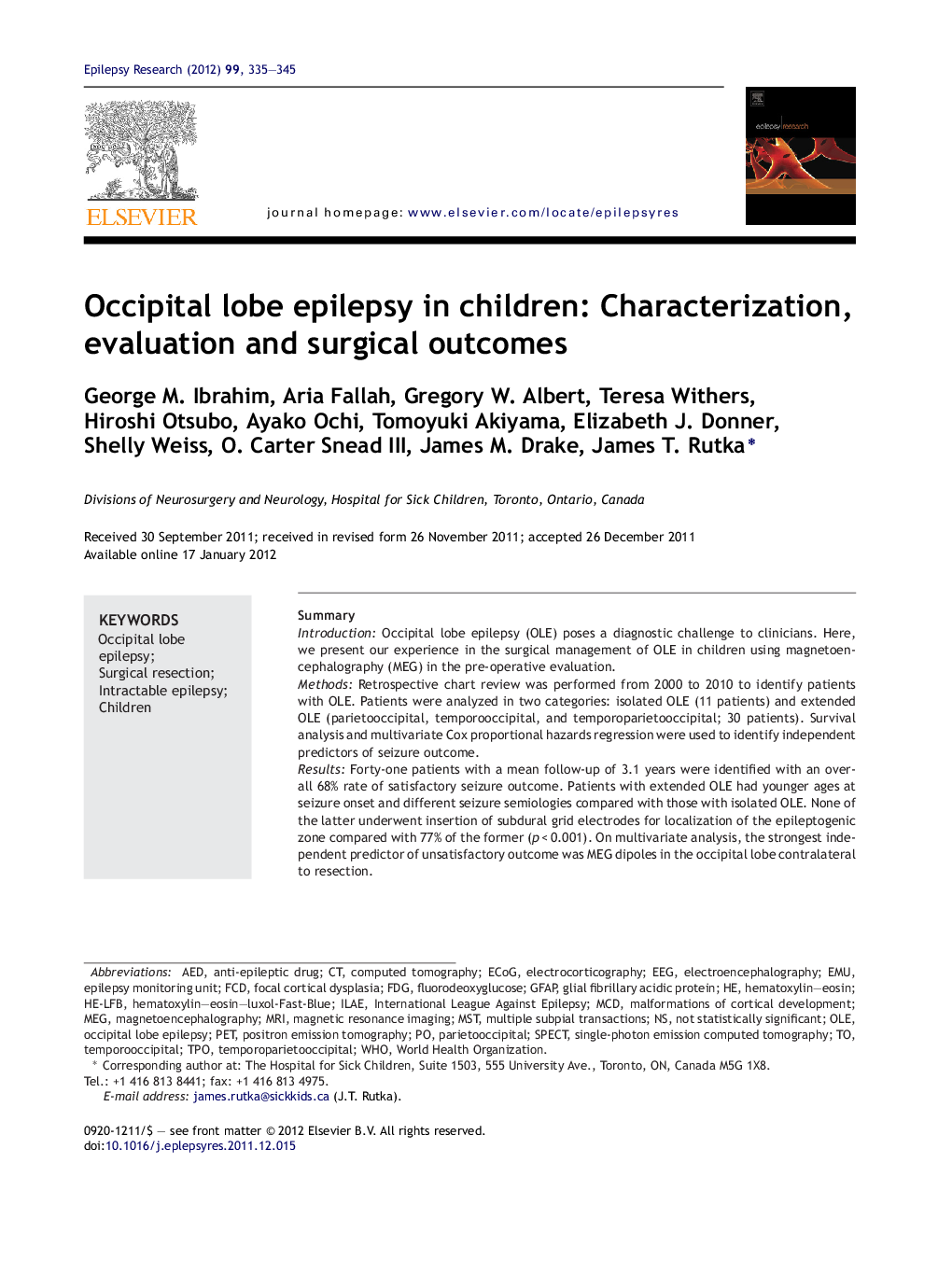| Article ID | Journal | Published Year | Pages | File Type |
|---|---|---|---|---|
| 3052337 | Epilepsy Research | 2012 | 11 Pages |
SummaryIntroductionOccipital lobe epilepsy (OLE) poses a diagnostic challenge to clinicians. Here, we present our experience in the surgical management of OLE in children using magnetoencephalography (MEG) in the pre-operative evaluation.MethodsRetrospective chart review was performed from 2000 to 2010 to identify patients with OLE. Patients were analyzed in two categories: isolated OLE (11 patients) and extended OLE (parietooccipital, temporooccipital, and temporoparietooccipital; 30 patients). Survival analysis and multivariate Cox proportional hazards regression were used to identify independent predictors of seizure outcome.ResultsForty-one patients with a mean follow-up of 3.1 years were identified with an overall 68% rate of satisfactory seizure outcome. Patients with extended OLE had younger ages at seizure onset and different seizure semiologies compared with those with isolated OLE. None of the latter underwent insertion of subdural grid electrodes for localization of the epileptogenic zone compared with 77% of the former (p < 0.001). On multivariate analysis, the strongest independent predictor of unsatisfactory outcome was MEG dipoles in the occipital lobe contralateral to resection.ConclusionHere, we find similar seizure outcomes for isolated and extended OLE foci despite the use of less invasive strategies for the former. Furthermore, we describe the role of MEG in evaluation, surgical planning and prognostication of children with OLE.
